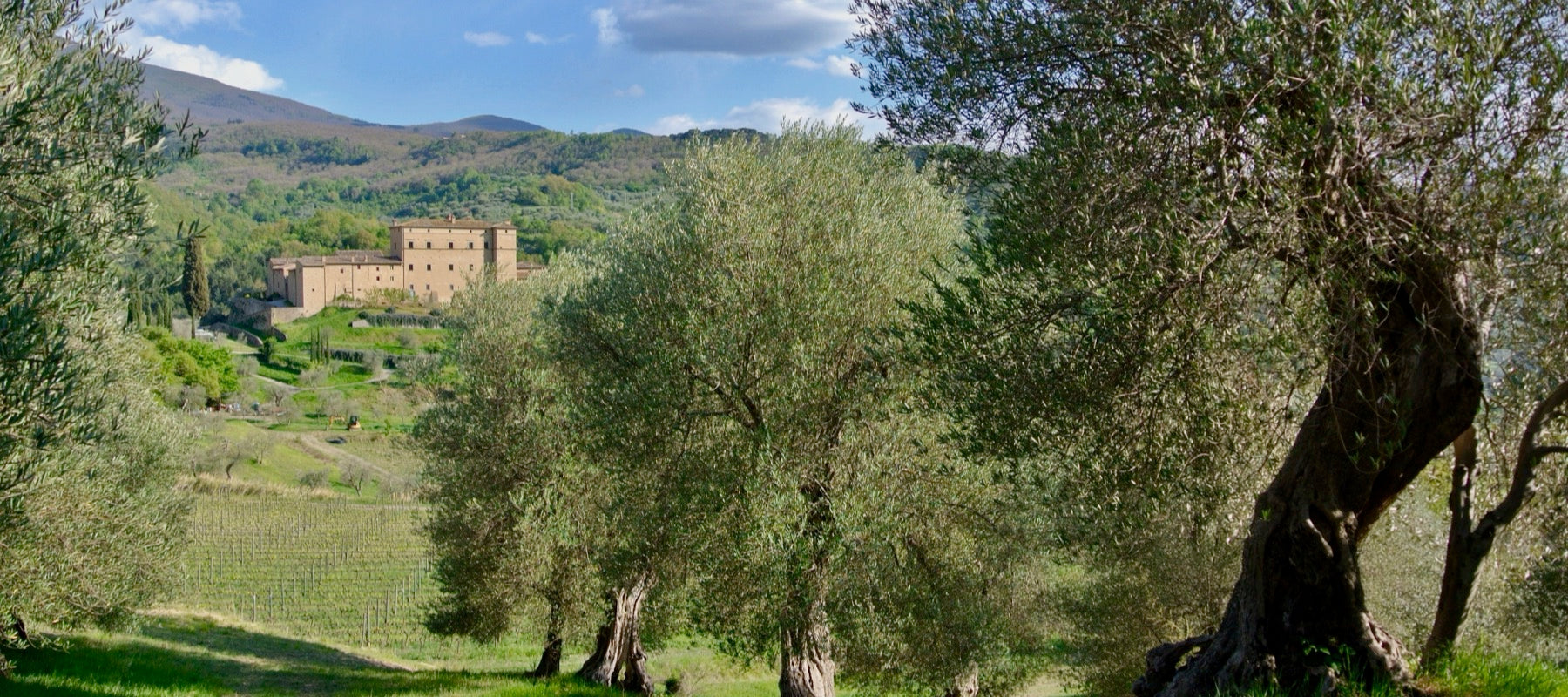

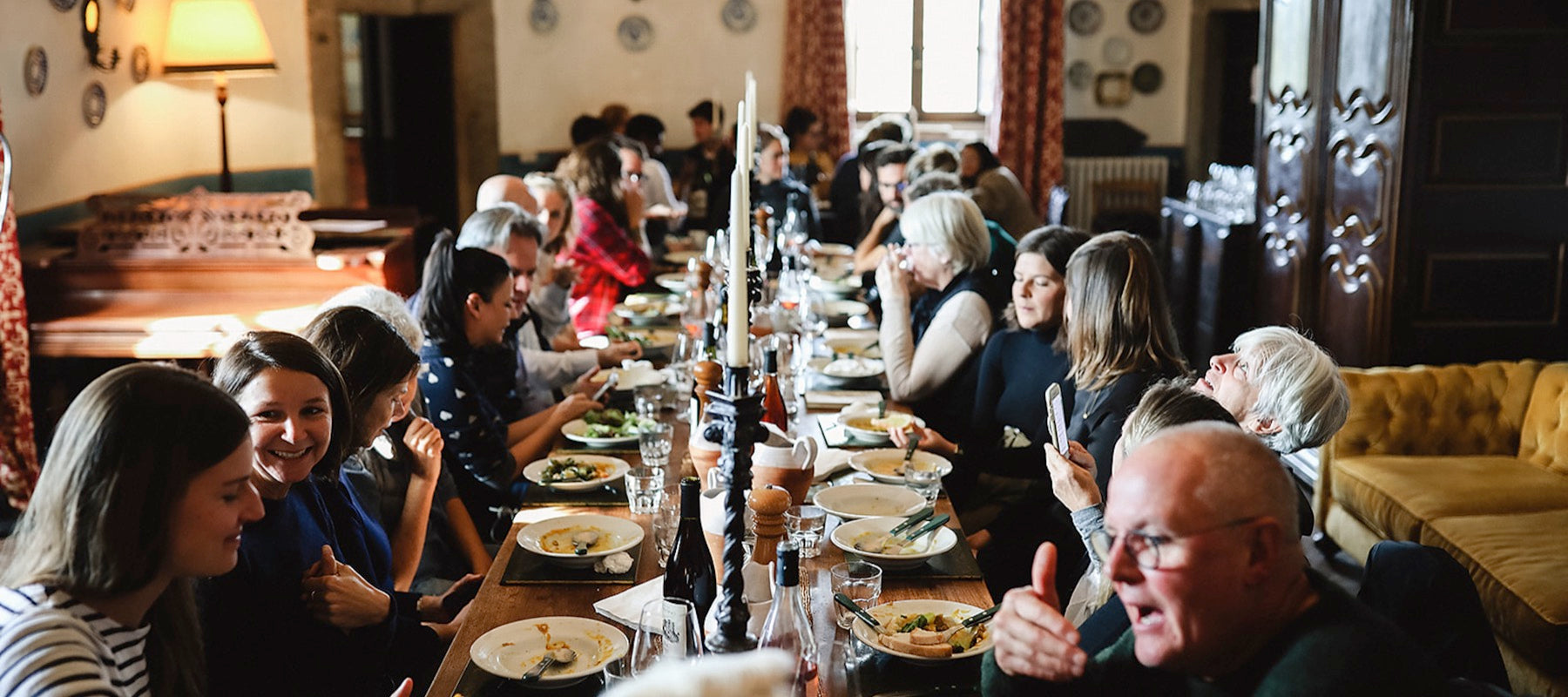

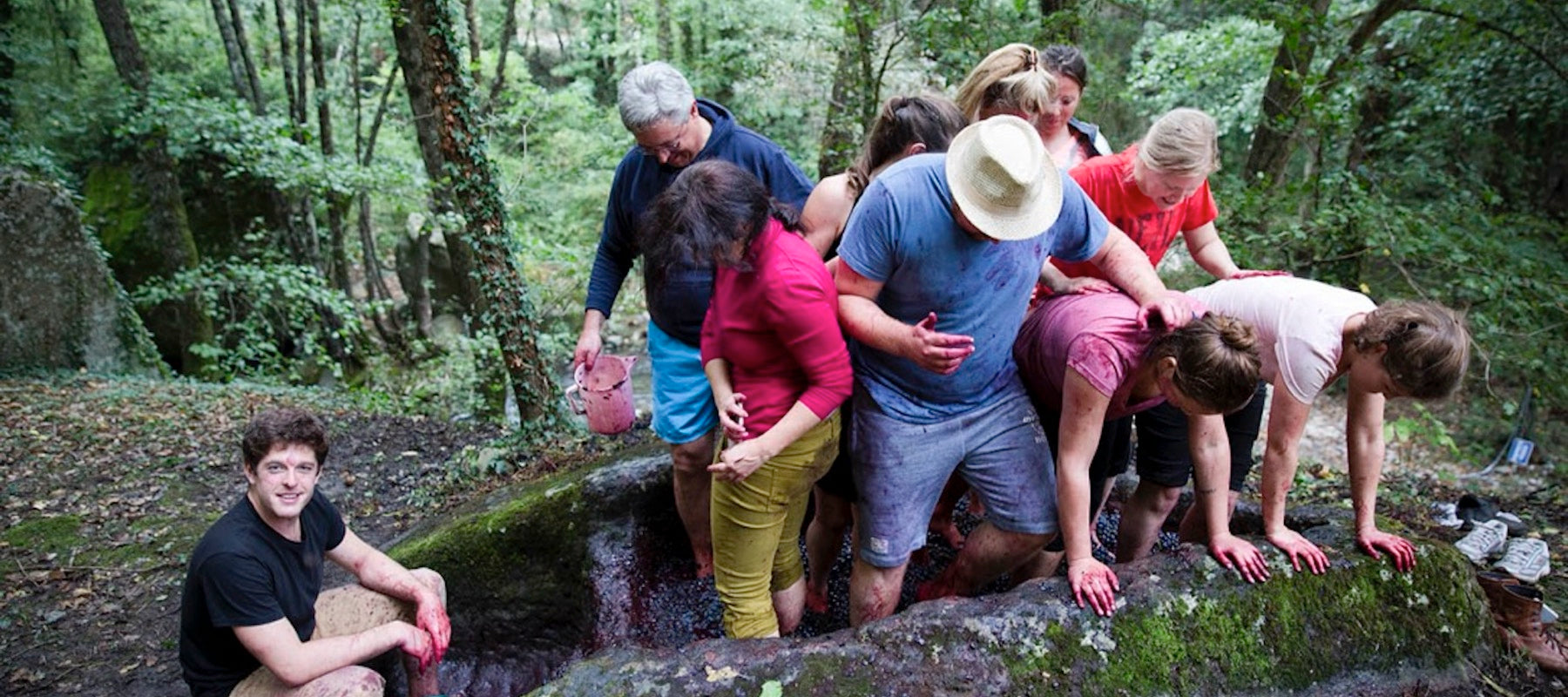

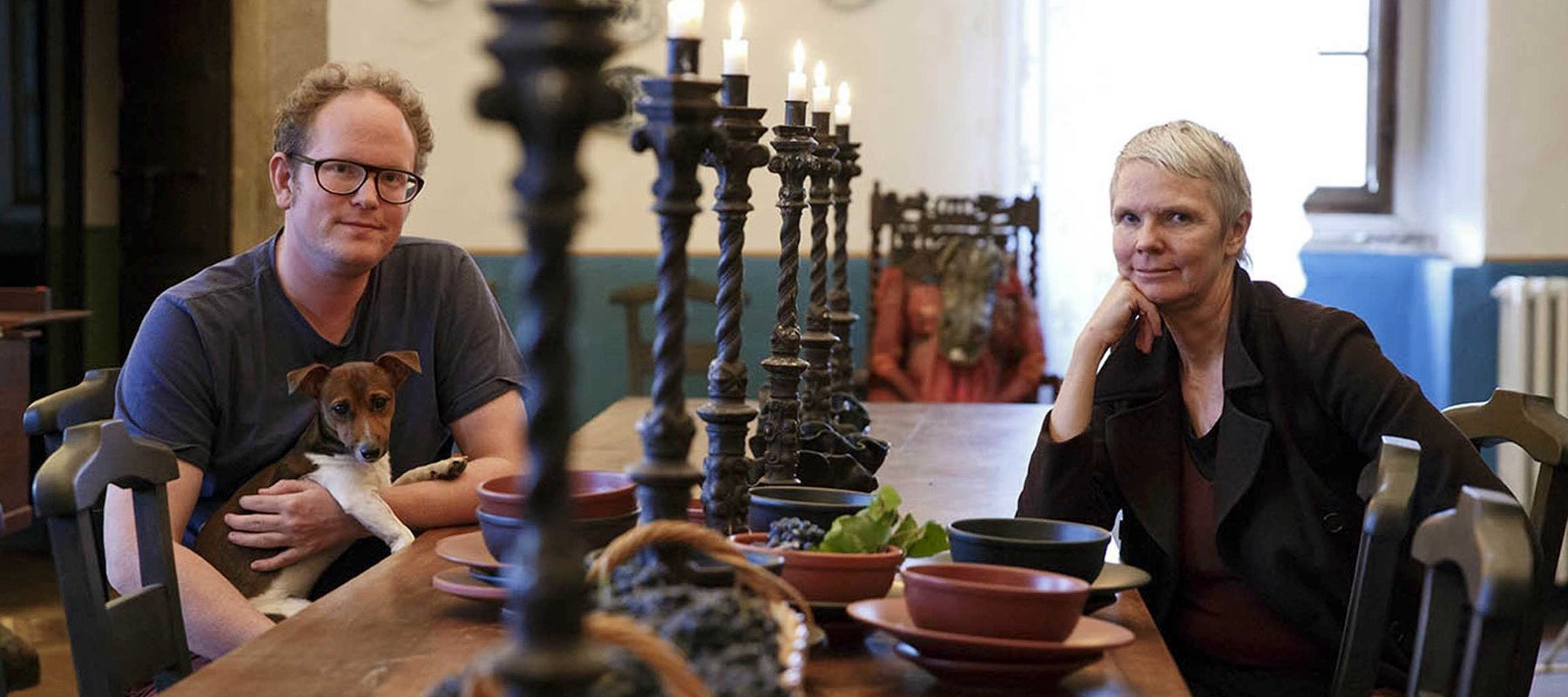

Introduction
Castello di Potentino is an ancient castle built on an Etruscan site. It lies in a secret valley in one of the last undiscovered corners of Tuscany – Monte Amiata. The medieval building is surrounded by unspoilt countryside, dotted with the vines and the ancient olive trees used for the estate’s small production of high quality wine, grappa and oil.
Bought and restored in 2000 by the Greene family, today the castle is operating as a dynamic cultural centre. Ideal as an off-season travel venue, it hosts guests, events and weddings all year round.
Agriculture and viticulture are about growing and living, so eating and drinking well are an important element in the Potentino ethos which is concerned with the sustainability of how we inhabit a place and relate to it physically and mentally.
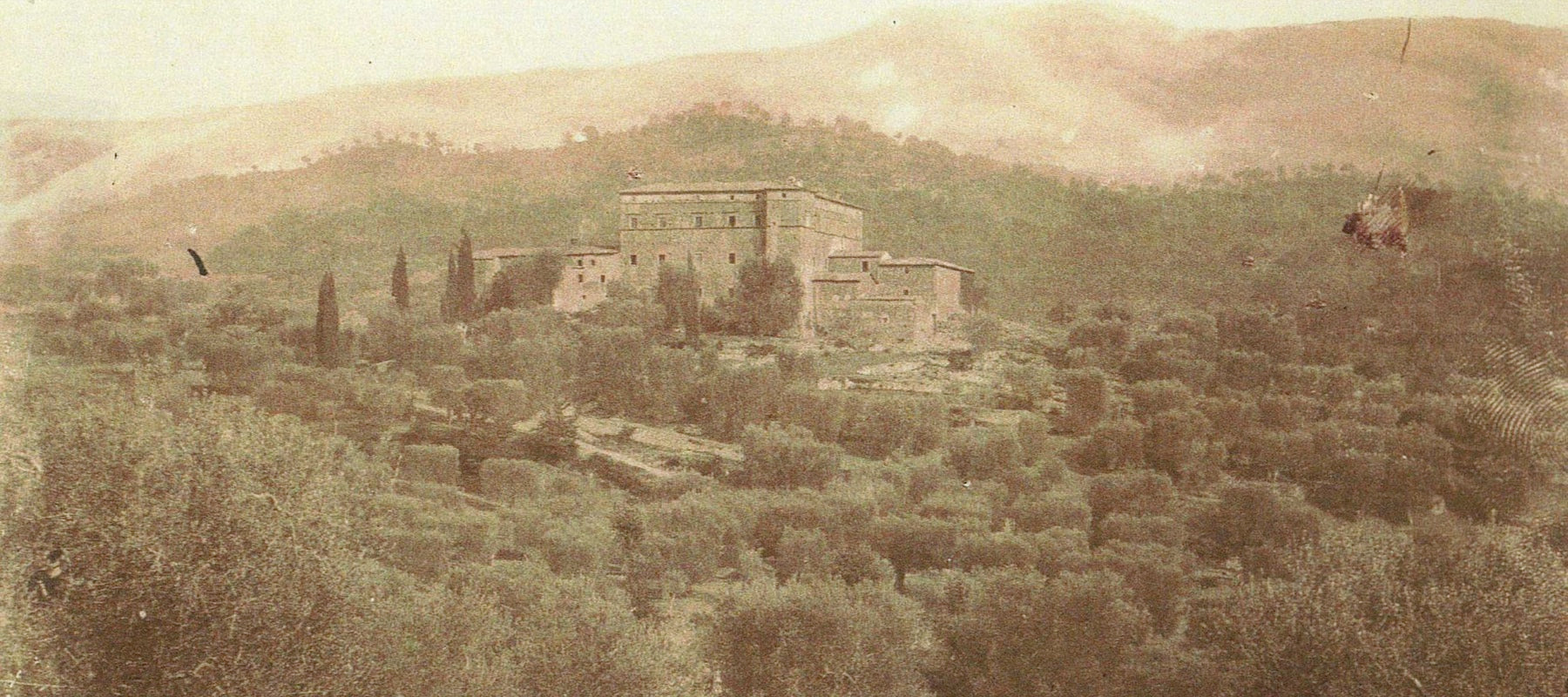

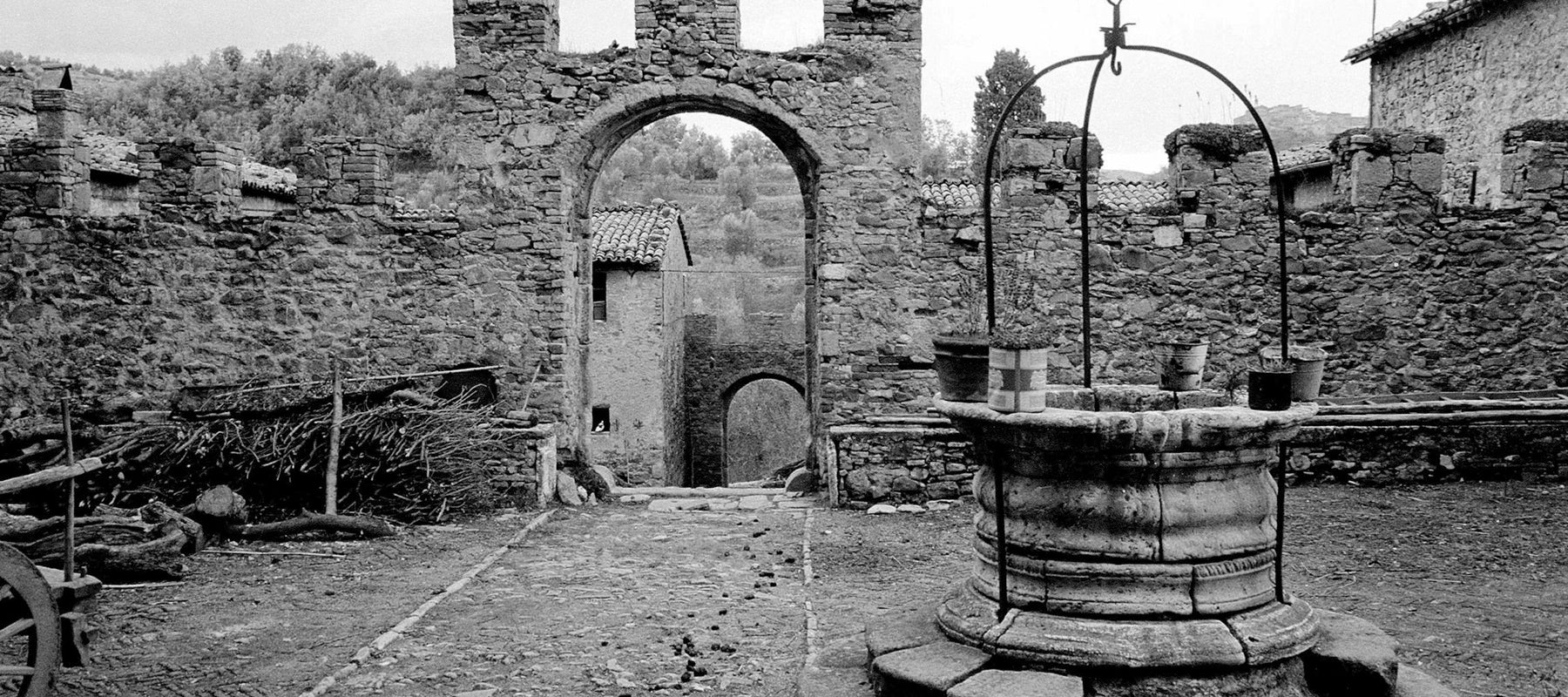

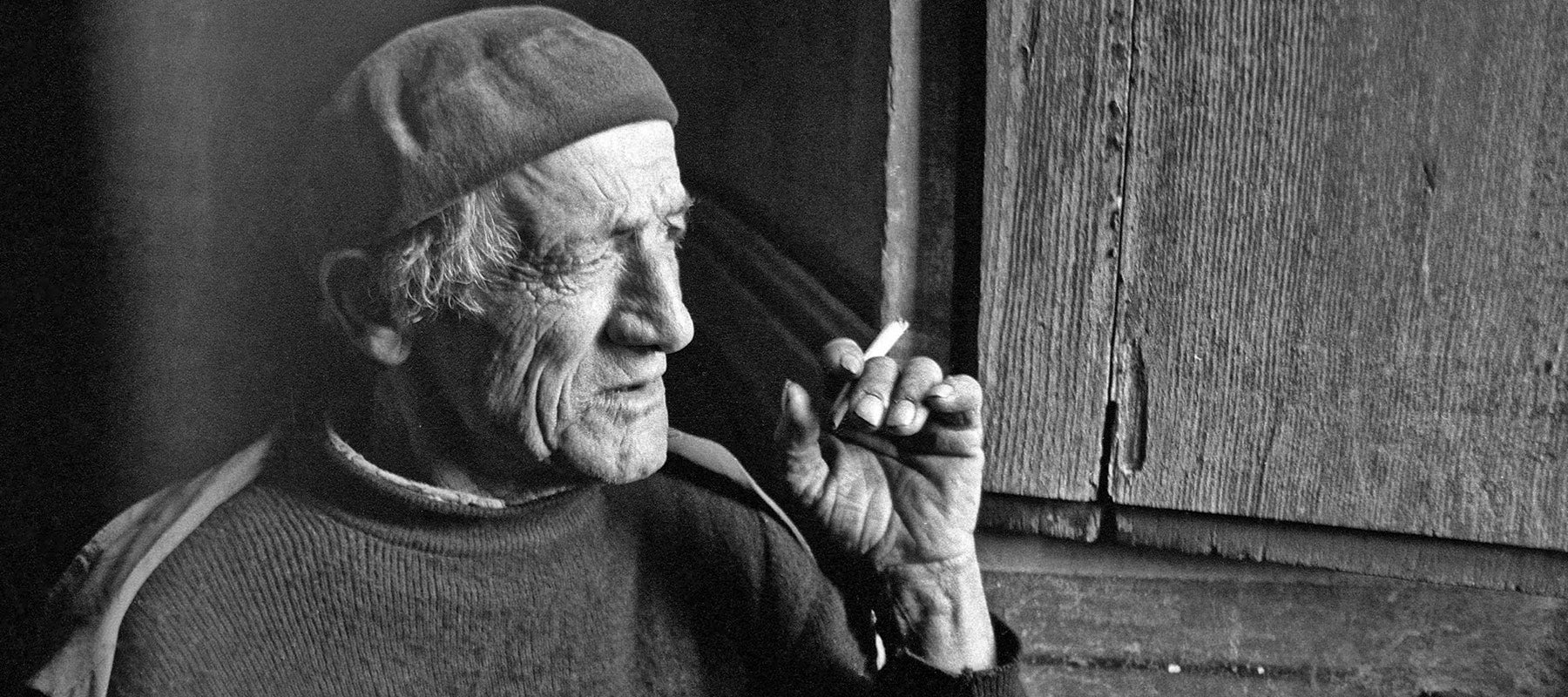

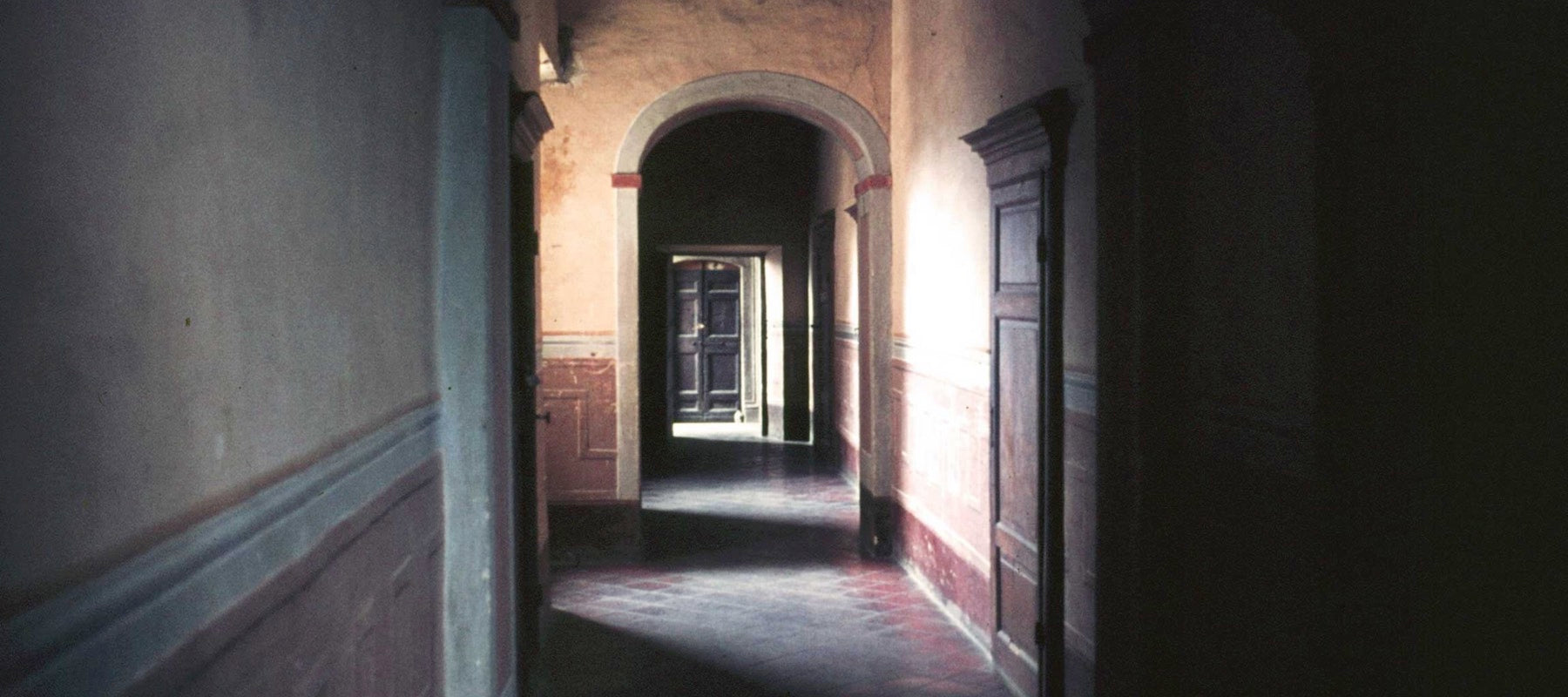

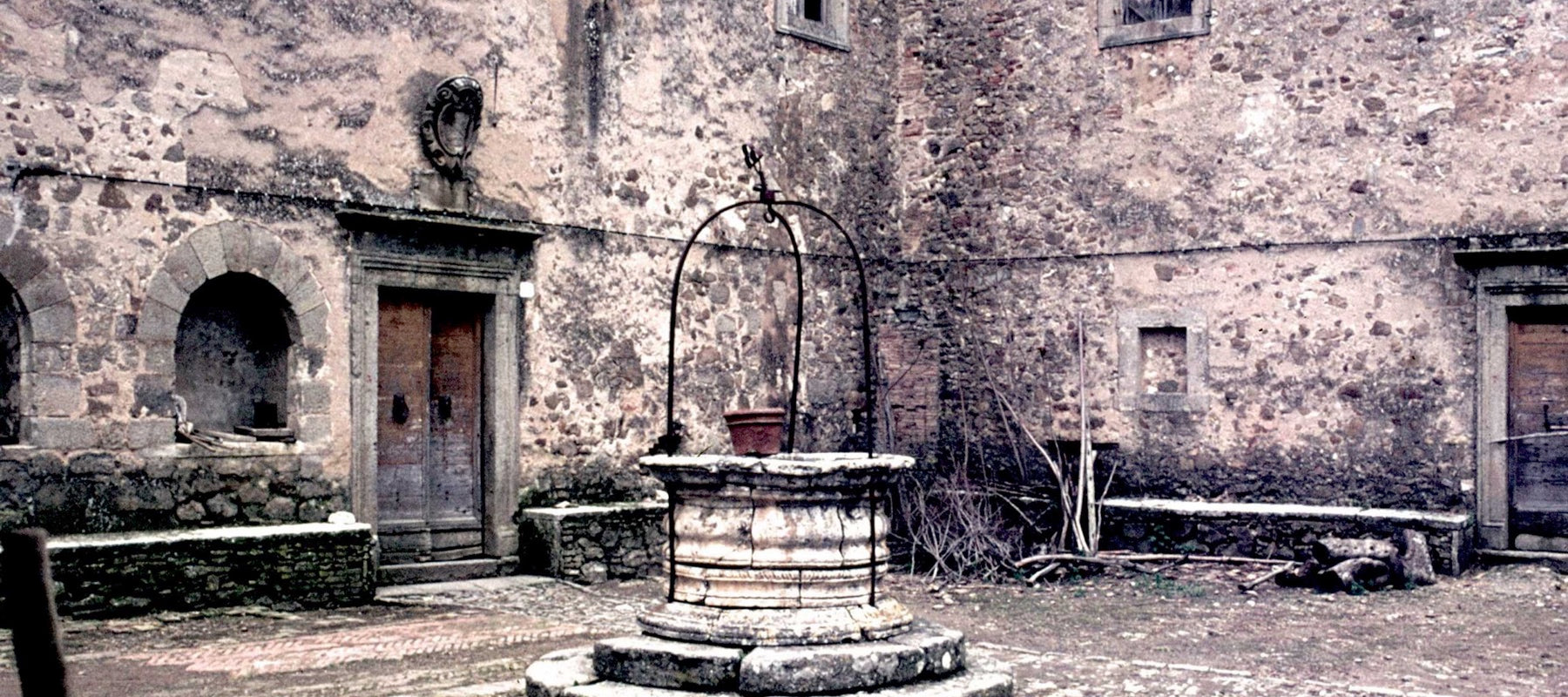

A Brief History of Potentino

After this period of religious activity, the Medici Duke Ferdinando I conceded the estate to Marchese Giovan Battista Bourbon del Monte, famous commander-in-chief of the infantry of the Venetian Republic. His descendants finally sold the castle to a gentleman from Switzerland, Antonio Hemmeler, in 1906. Recently it was purchased and restored by the Greene family, who have given new life to the ancient traditions of the building.
The Greenes have owned properties in the Tuscan Maremma for over 30 years. Starting with a farmhouse near the coast, they gradually moved inland. Castello di Potentino is their second major project in the Grosseto area.
In 1989 the family purchased their first ruined castle – the Castello di Montepo, Scansano. Restoration was completed, vineyards planted and a winery established. After 10 years it was sold to a well-known wine producer from the Biondi Santi family. The next castle, Potentino, was discovered in an old guide book. Abandoned, dilapidated, overgrown, the potential was still apparent. It was for sale but had to be bought from 22 different people. Negotiations took a year and agreement finally reached with all the owners. In 2000, work commenced.
Charlotte has been researching the castle's history for nearly 20 years now and is always uncovering new information. Do ask her if you are interested as she is very knowledgeable.
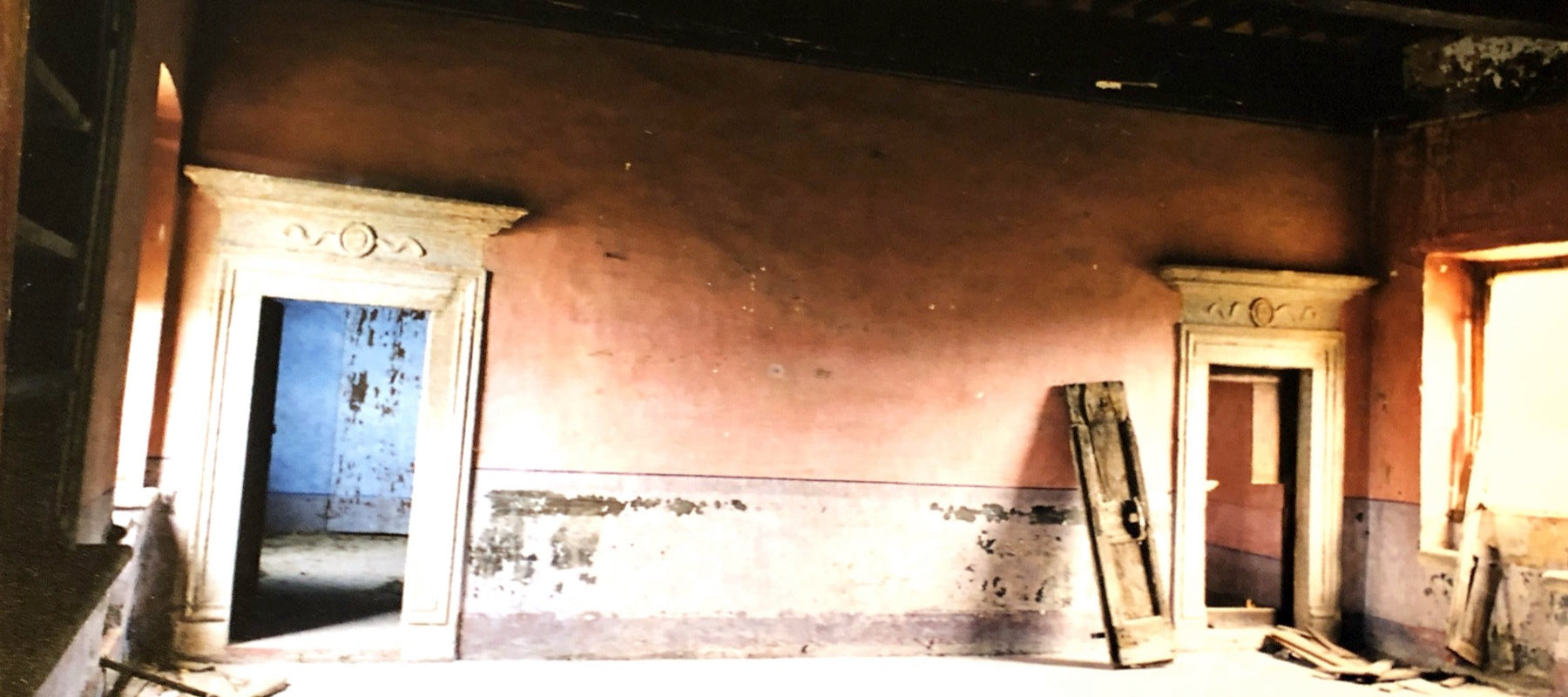

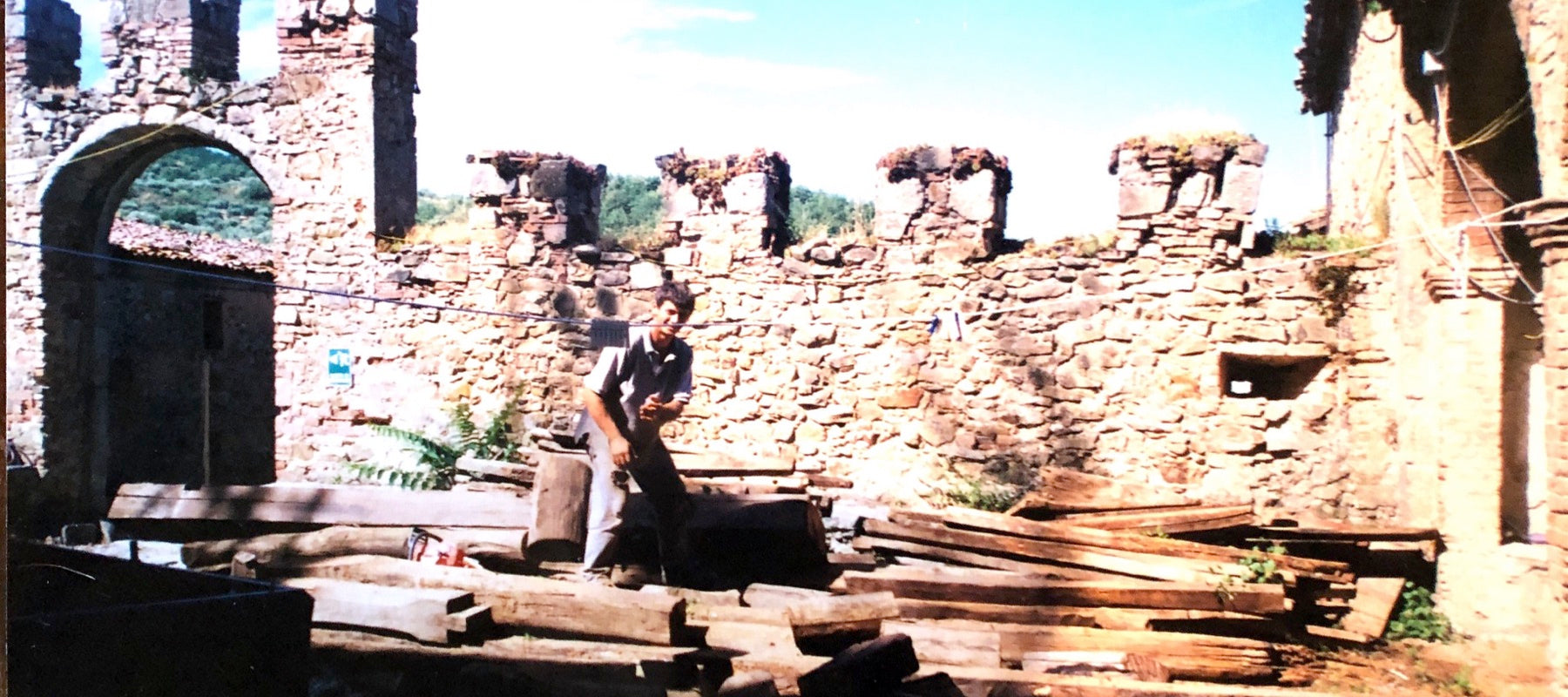

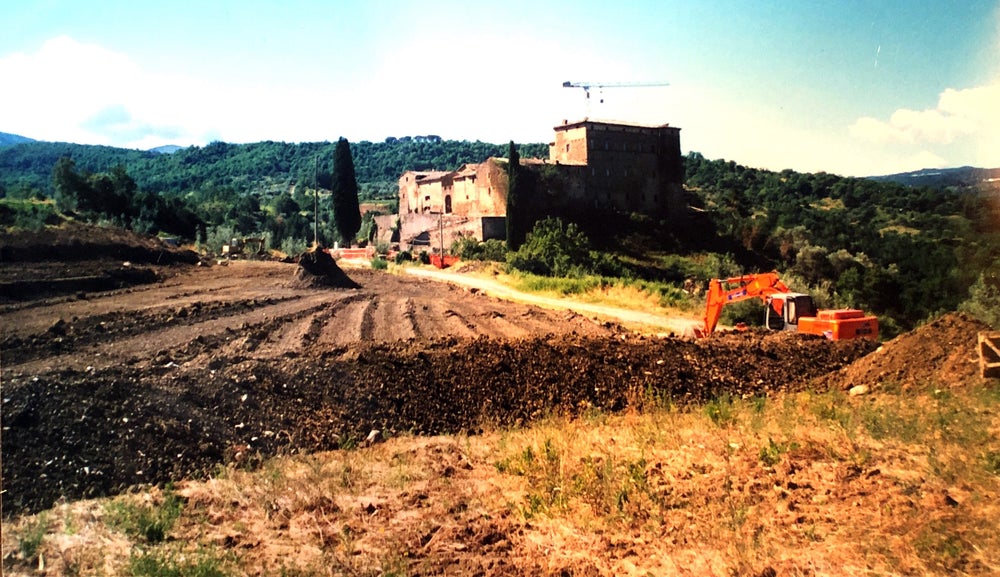

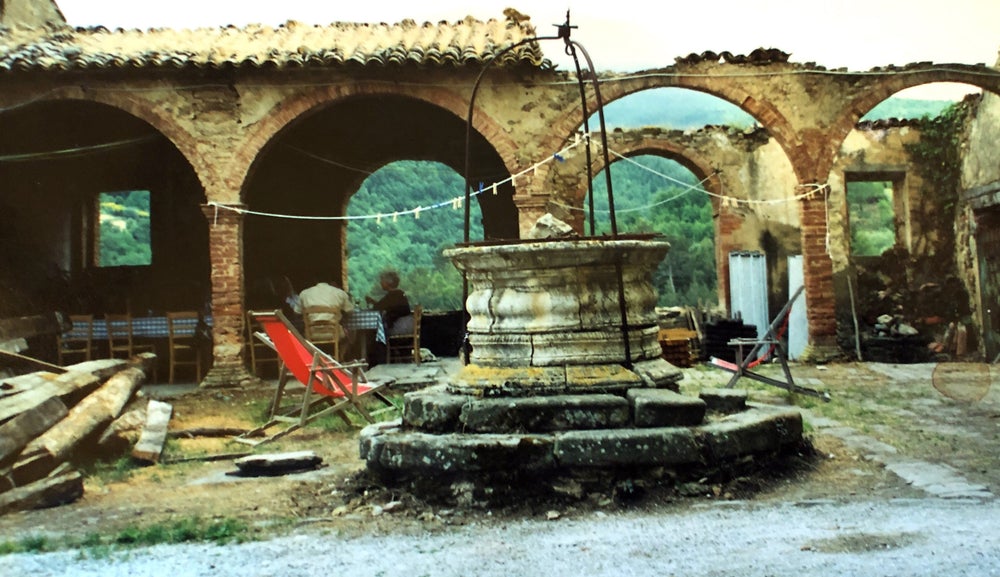

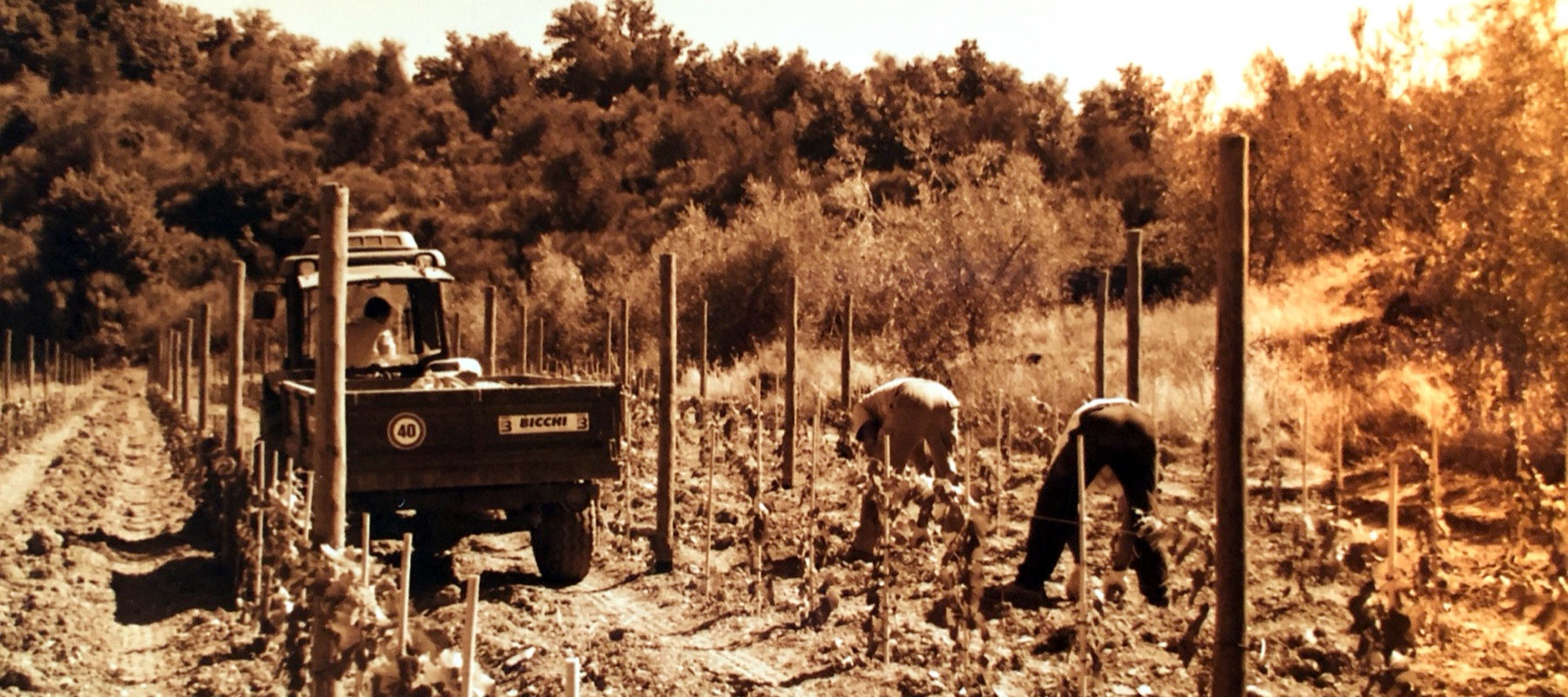

The Restoration
The castle was a complete wreck when we found it. Rooves falling in, doors and windows in bits and pieces, rooms full of bottles and old mattresses. It took our team at least 2 weeks to clear it out before we could even start working out how much there was to do. The scaffolding and a crane went up and the courtyard filled with rubble and old beams. There was no plumbing or electricity so bathrooms were quite a novelty for the building. The loo we found was a medieval hole with a long drop to a cess pit at the bottom of the tower! Bit by bit we recovered each room, painted and decorated, saving as much of the colours and designs we found. The first part we finished was the winery so we could harvest the first vintage of wine in the year 2000.
We had some restoration principles that helped to make it seem that we had not really restored things.
Recycling and using natural materials that are local and tradition - terracotta, peperino (a local volcanic stone), chestnut wood, earth pigments and oxides for colour and whitewash for its irregular deep textures.
Old beams were cut and used to face newly constructed doors. Coach bolts instead of modern screws. Rusty hinges, not shiny brass or chrome. Cobwebs and crumbly paint untouched so age-old patinas retained. And above all, the dirty rag to rub away any hint of the new.
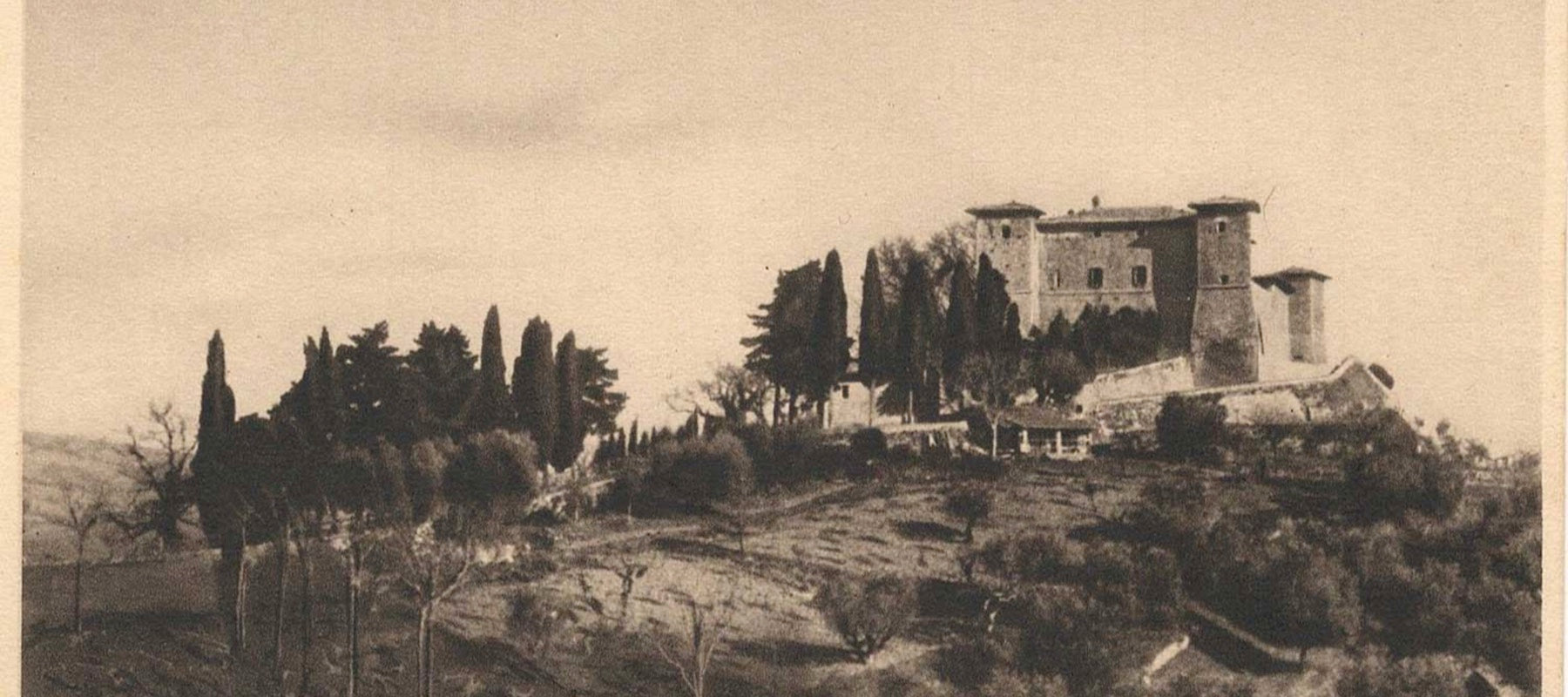

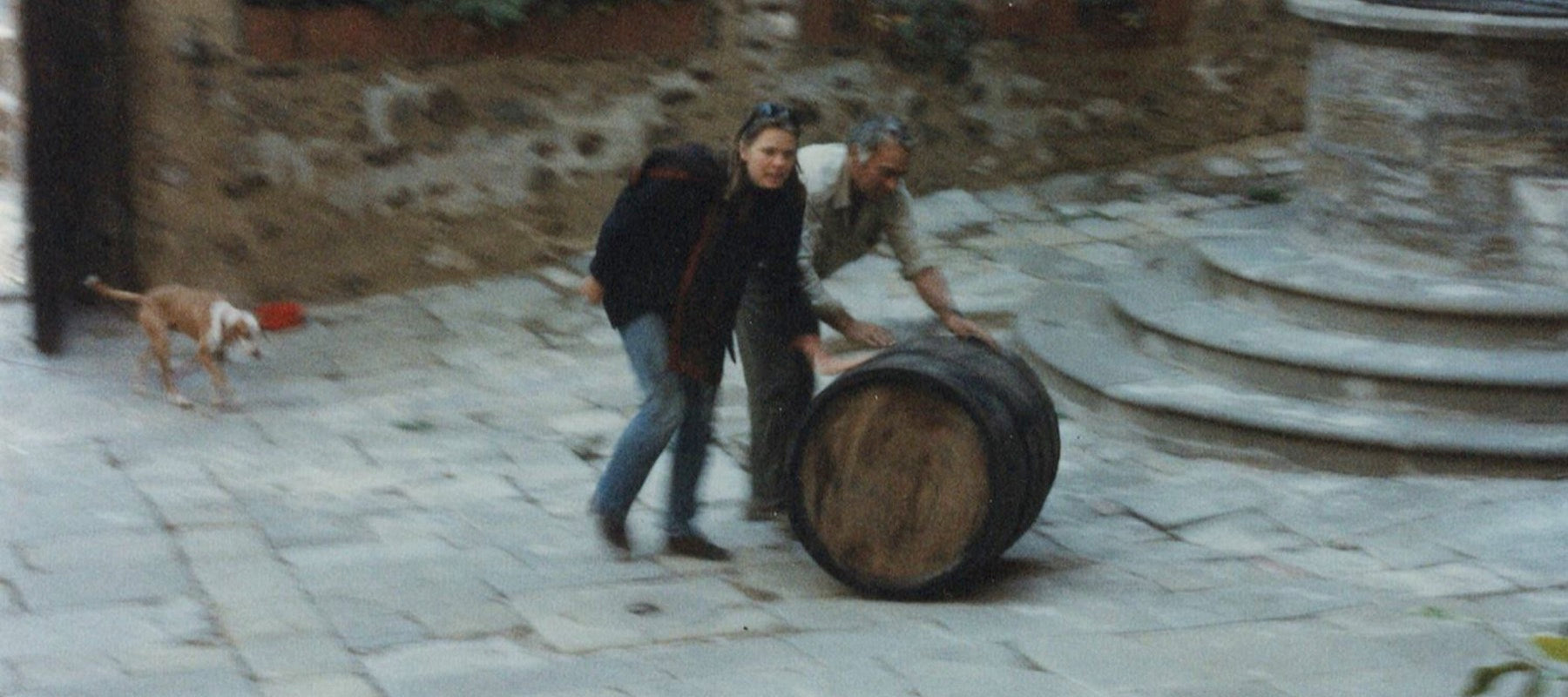

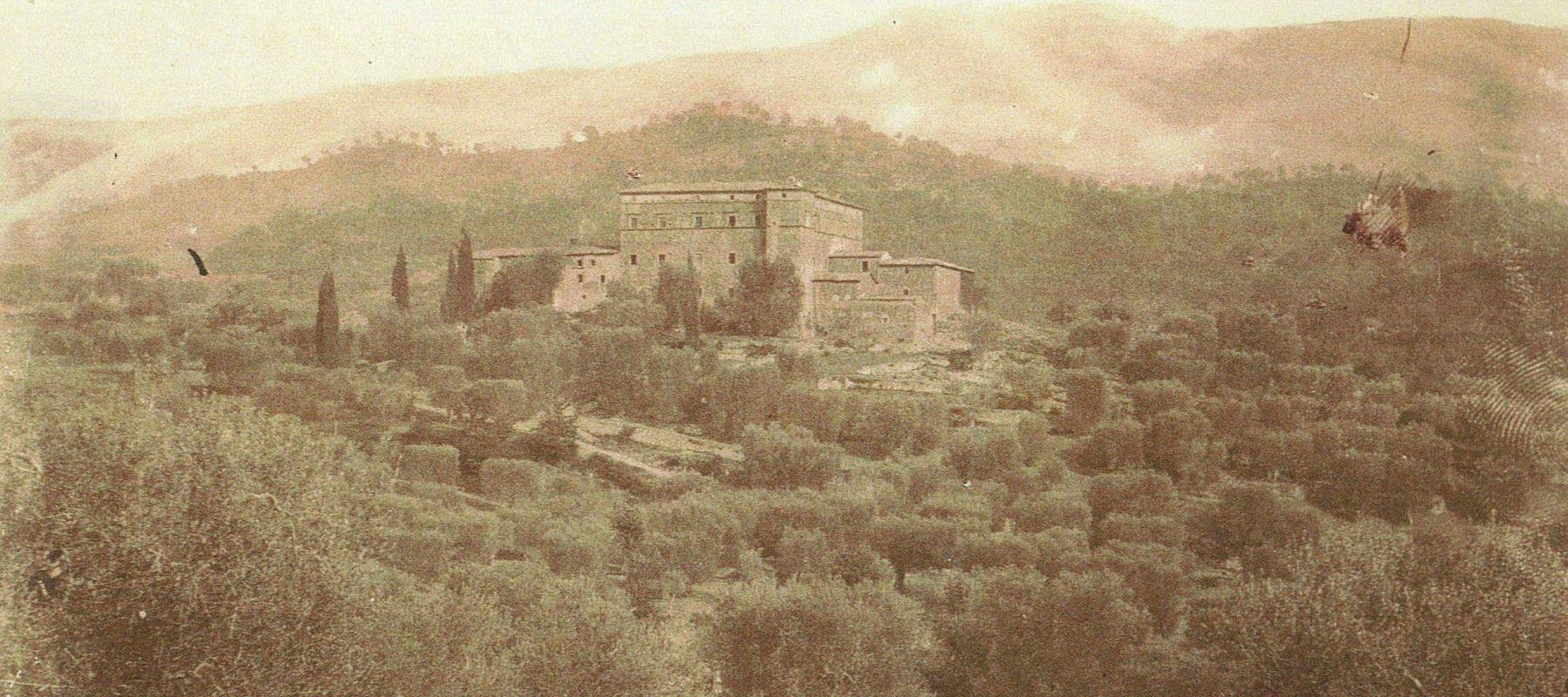

How did an English family end up in Tuscany?
It all started with Helga Guinness, our grandmother who decided to retire abroad in the early 1970’s. Helga met an Italian woman at a bus stop on a Greek island and mentioned she was looking for a house. A few months later a telegram arrived from this enigmatic woman saying a deposit had been put down in Helga’s name on a ruin near the Maremma coast.
The Maremma, Helga discovered, was a wild, unspoilt and desolate marsh area between Pisa and Rome, unspoilt and desolate due to a relatively recent history of malaria and banditry. Being adventurous, she visited it and promptly bought it. A simple farmhouse originally, it was converted by a groovy young architect friend of someone’s – Bruno Sacchi (he did the Museo Marino Marini in Florence.) It even got into Casa Vogue.
The Maremma became more and more fashionable, among the beautiful people. We spent all our holidays there, graduating from ice creams, windsurfing, discos to ruined churches, frescos, Etruscan tombs and Piero della Francesca. Charlotte used to cry every time she had to go back to London.
After Helga died, the family eventually decided to buy something bigger. Property in that area was very reasonable in those days – the 1980’s. We immediately started to chase our fantasy, and found it – a vast and severe Renaissance fortress in the back of beyond hills above the coast, the Castello di Montepò. The decision was made to buy it, and restoration began. Charlotte sold up, left London, and lived for months above a cowshed with no electricity and no water while work proceeded. We planted a vineyard, and Charlotte began to develop her passion for winemaking. She produced her first bottle commercially in 1995. After ten years there, however, we decided that the castle should be sold. With its six ruined farmhouses, 1000 acres, pigs, sheep, cows and goats, it was just too much.
The Castello di Montepò was sold to a famous Italian wine-maker, Biondi Santi, and it was decided to re-invest in a smaller, more manageable property. We found, and eventually purchased from no fewer than twenty-four different owners, another even more ruined and remote castle, and started all over again. We bought the Castello di Potentino in 2000, and Charlotte has been living and working there since.
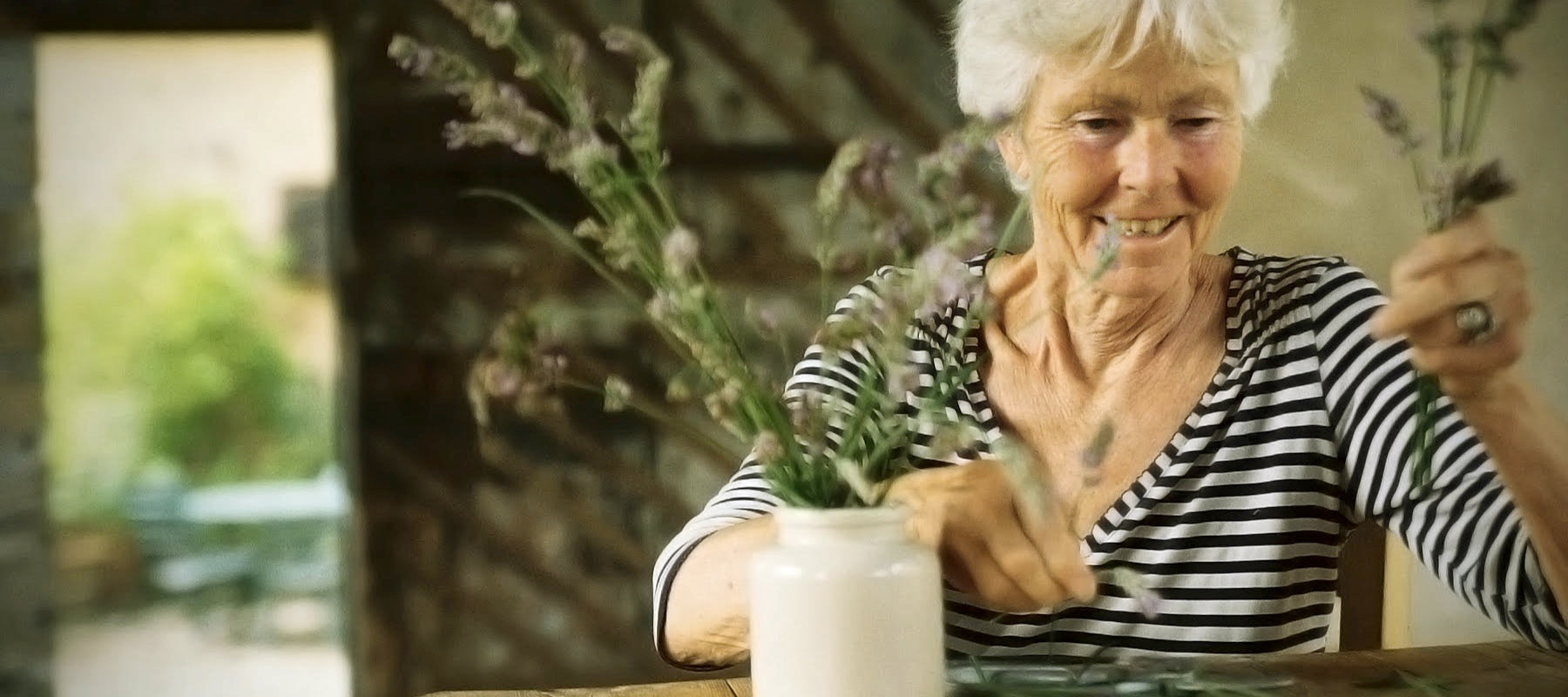



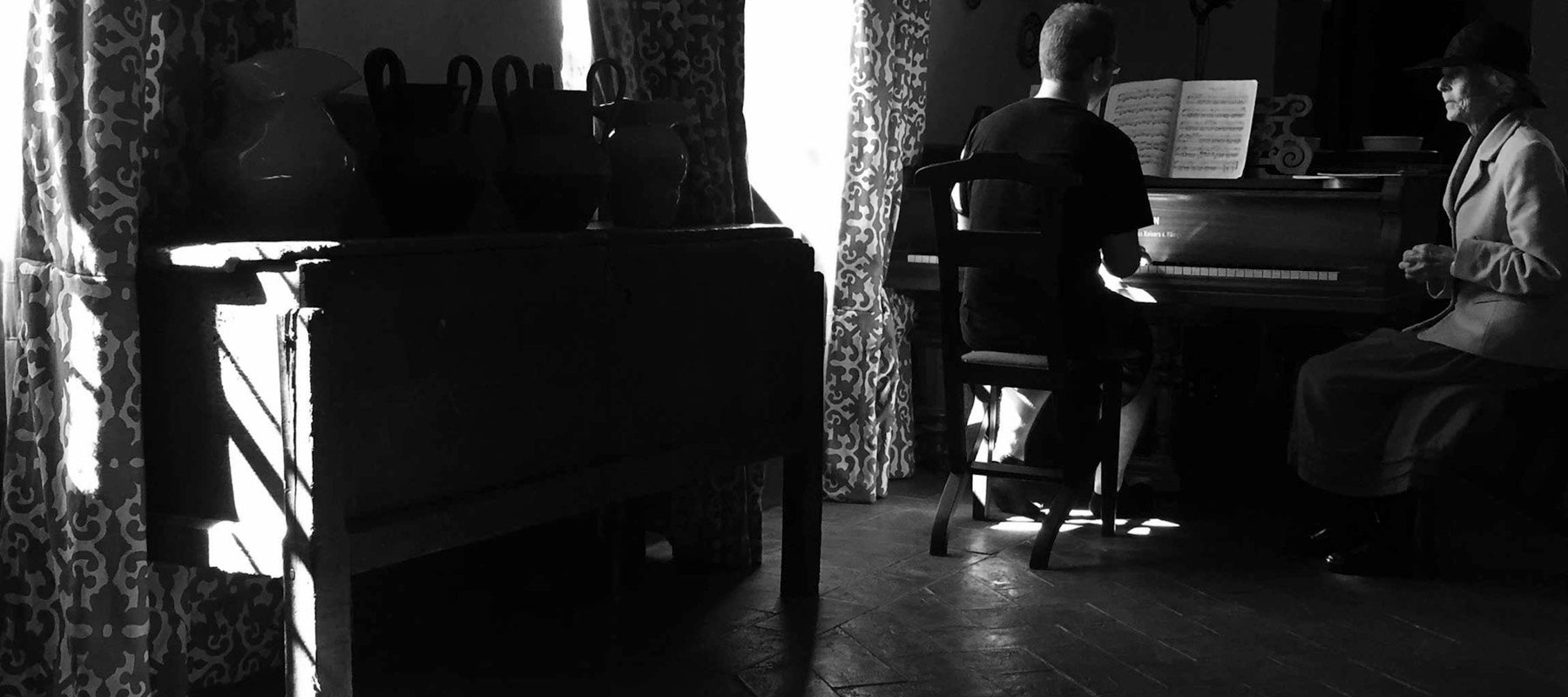

The People
Charlotte Horton has been making award-winning wines in Tuscany for over 20 years. She has restored two castles in Tuscany and at Castello di Potentino, she has revitalized an abandoned estate, planting new vineyards, bringing back olive trees into production and recreating the castle as a cultural centre and a bed and breakfast. She and Alexander have been running food and wine pop-up events in London, Ireland and France since 2010. She wrote a book about Potentino Life and the restoration with photographer Michael Woolley, published by Rizzoli called A Tuscan Adventure.
Charlotte has been living at and restoring Potentino since 2000 when the family purchased the ruin, making wine, running programmes with international academic institutions, a documentary festival and various cultural events. Before moving to Italy, she worked for Vogue Magazine, Secker and Warburg Publishing House and then as a freelance journalist. In 2013, she was recognized as one of the Barclay’s Women of Achievement.
Alexander Greene was part of the team that set up the Frontline Club, a members’ club and restaurant in Paddington that specializes in Independent Journalism, hosting the likes of Wikileaks and Litvinenko. He then went on to work at the book publisher Little, Brown Book Group whose authors include J.K. Rowling, Stephenie Meyer and Patricia Cornwell. He is a director at Castello di Potentino and Raymond Chandler Ltd.
Sally, Alexander and Charlotte’s mother also lived at the castle. A ballerina and photographer, she was brought up in one of oldest inhabited houses in England - Luddesdon Court in Kent, always had a very good eye for houses and has inspired the purchase and decoration of all of the family’s houses. She had a particular love of old textiles, which can be seen around the castle, giving such a wonderful texture to the house. She left us in 2019.
Graham Greene, Alexander’s father, died in 2016 after a distinguished career in publishing and in public service (he was Chairman of the British Museum for many years). He is often missed as he used to sit under the loggia quietly reading a good book and was a benign presence when at Potentino.
To round out the team at Potentino, Uran and Ervelina have been working with us since before we moved to Potentino for more than 16 years. They are now considered to be members of the family and have two children, Roberta and Flavio. Uran looks after the vineyard and the olive groves, can be found chopping wood in the winter and helping Charlotte in the winery. Ervelina looks after the house and is the backbone of the castle.
The Literary Connections

Graham Greene
Many people ask us about whether we are related to Graham Greene the author. Yes- he is Graham’s uncle (they were named after the same relation, who was Secretary to the 1st Sea Lord under Winston Churchill.

Raymond Chandler
Helga (Alexander's grandmother), before moving to Tuscany, had been engaged to the hard-boiled detective writer of Philip Marlowe and Film Noir notoriety, when he died. Graham and Alexander ran the literary estate until Graham's death with Ed Victor. It is now run by Alexander.
It is strange to think that the Philip Marlowe character famously played by Humphrey Bogart in The Big Sleep has contributed to the making of Castello di Potentino.
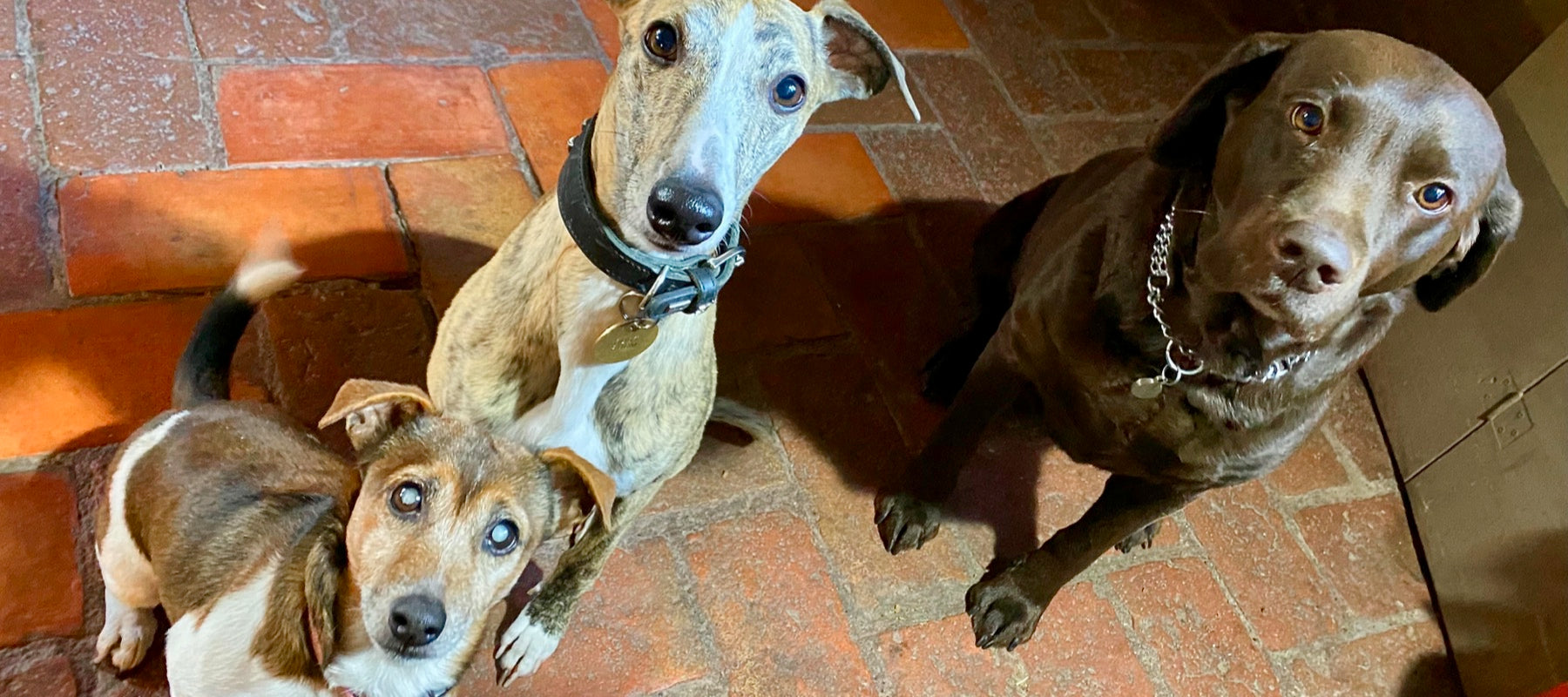

The Pets
Meet Otto the Jack Russell, Circe the chocolate Labrador, Carlotta the Italian Greyhound and 5 generations of our very lovely outside cats starting with Lady Jane Grey, with subsequent Dynasties named after Roman Emperors, heroines of Greek tragedy and, constellations- who knows, by the time you get here there may be a few more!
Castello di Potentino
Castello di Potentino lies in a secret valley nestled in one of the last undiscovered corners of Tuscany - the Amiata. The nearest villages are Seggiano to the east and Montegiovi to the west.
Potentino Società Agricola SRL
Castello di Potentino
Seggiano 58038 (GR)
Italy
